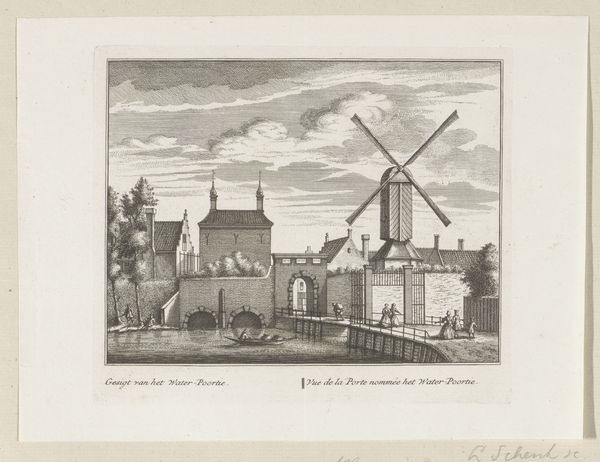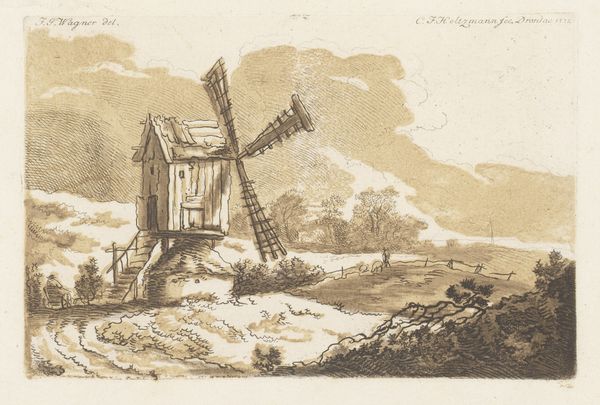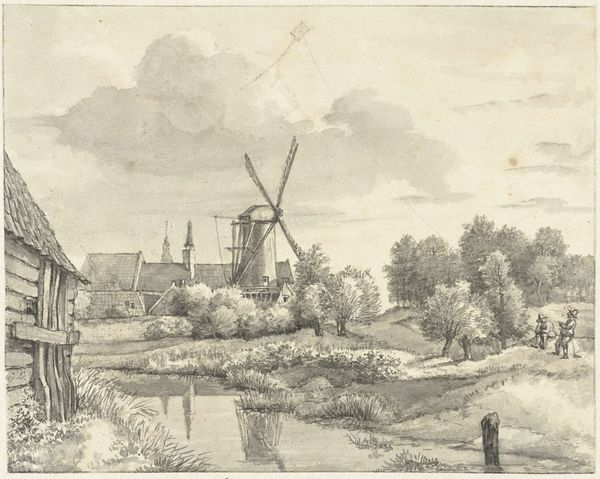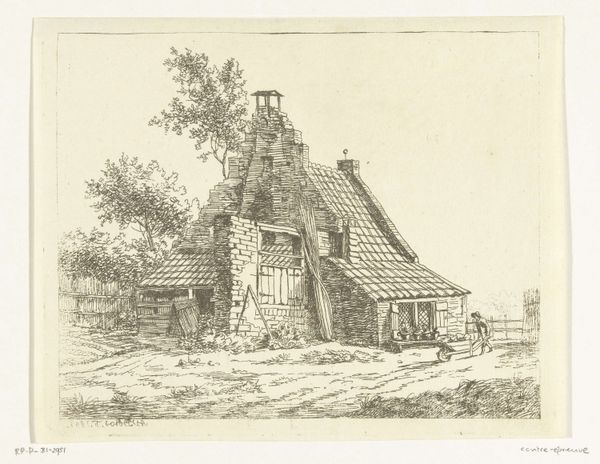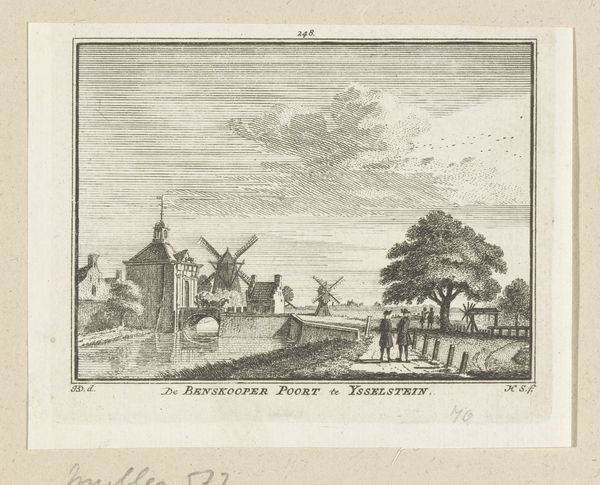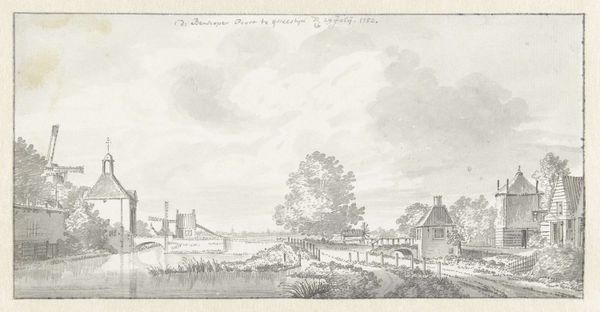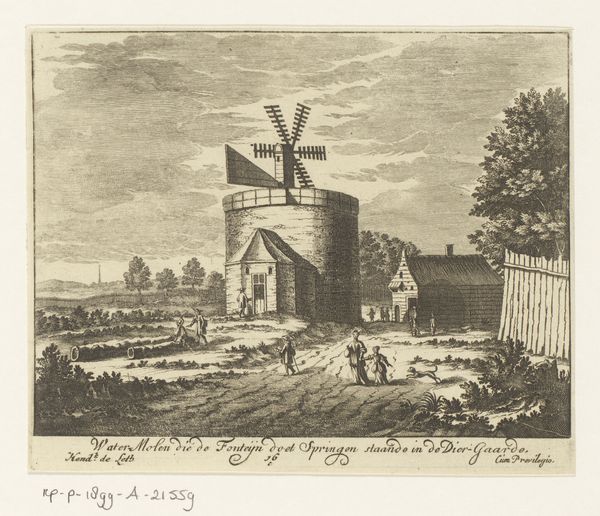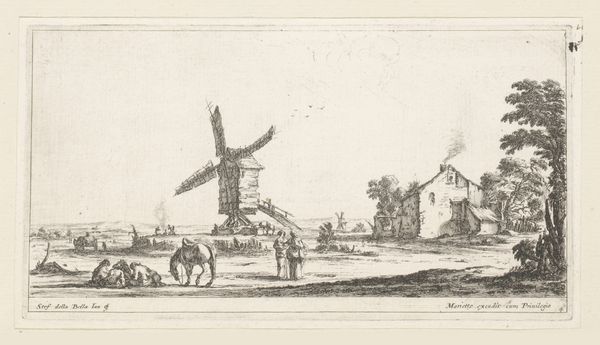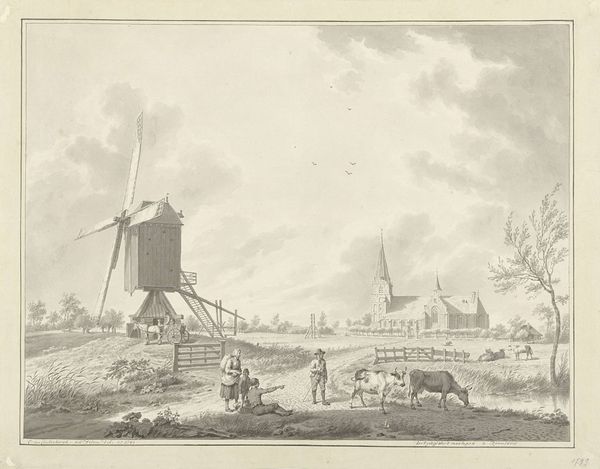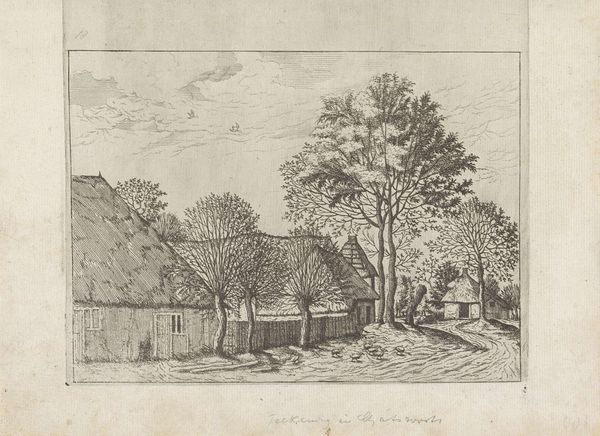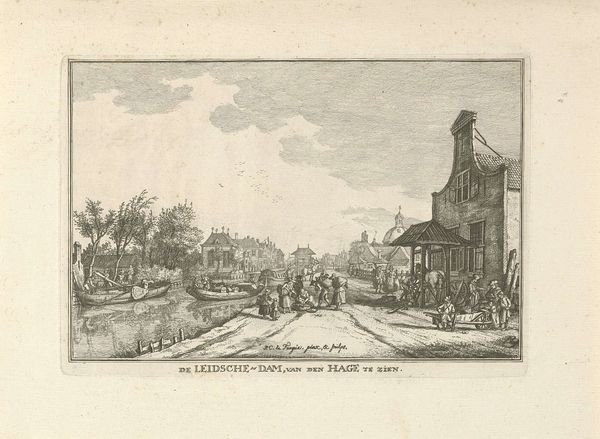
print, engraving
#
baroque
#
dutch-golden-age
# print
#
landscape
#
cityscape
#
engraving
Dimensions: height 138 mm, width 202 mm
Copyright: Rijks Museum: Open Domain
Editor: Here we have Hendrik Spilman's "View of the Raampoort in Haarlem, 1739", an engraving, which offers us a detailed look at a scene from the Dutch Golden Age. What strikes me is how everyday and yet idyllic the scene appears; almost staged for the viewer's gaze. What stands out to you in this piece? Curator: What I notice immediately is how Spilman uses this image to convey not just a physical place, but an idea of Haarlem itself. This was a time of significant urban expansion and economic growth for the Netherlands. Do you think this print serves as documentation, celebration, or perhaps even a bit of promotion of the city? Consider where such images would be displayed and consumed. Editor: I think it's a combination, perhaps leaning towards promotion. It seems very deliberate, doesn’t it? Like an invitation to experience the order and prosperity depicted. Where would images like these typically be seen? Curator: Exactly. These images likely circulated among merchants and city officials, even potential residents. So, it is promoting Haarlem, showing its modernity via that carefully composed vista with the prominent windmill, a symbol of Dutch ingenuity, strategically placed within view of the city gate. The print underscores a particular narrative of progress. How does understanding the socio-political role of imagery at the time affect your reading of the artwork? Editor: I see the artwork differently now! Viewing this as a carefully constructed piece of urban marketing and political rhetoric changes how idyllic it appears at first glance. Thanks! Curator: Indeed. Analyzing art through its historical context makes us aware of the societal values and even propaganda that the artwork implicitly transmits and also reveals its public function beyond mere aesthetics.
Comments
No comments
Be the first to comment and join the conversation on the ultimate creative platform.
